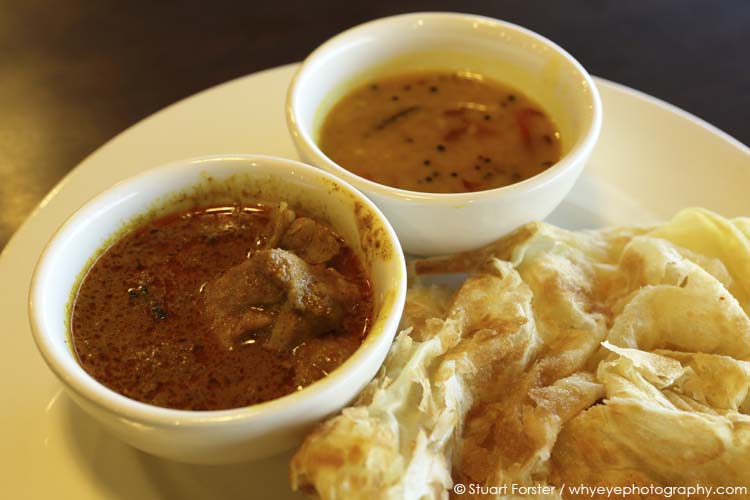Stuart Forster discovers top attractions to visit during a city break while exploring Kuala Lumpur, Malaysia.
I’m looking out from Menara Kuala Lumpur’s observation deck, 276 metres above the Malaysia’s biggest city. KL, the abbreviation by which locals know this conurbation, was awarded city status as recently as 1972. With the sun beginning to set, I’m at a prime location to appreciate this dynamic city’s evening skyline.
Eavesdropping on a tour guide’s informative speech I discover that, until the middle of the 19th century, the land below would have been carpeted by rainforest. Where foliage once swayed, sunlight now glints back from countless windows and the metallic façades of the 421.9 metre-high Petronas Twin Towers, the world’s tallest building from 1996 until the end of 2003.
Improbable though it seems today, given the city’s modernity, Kuala Lumpur actually means ‘muddy confluence,’ after the spot where prospectors found tin at the meeting point of the Gombak and Klang rivers.
Malayasia Airlines’ Primary Hub
In the early years of settlement – after KL was founded in 1857 – only a trickle of Chinese, Malaysian, Indian and European settlers were drawn to the region. Last year, by contrast, more than 47 million passengers passed through Kuala Lumpur International Airport, Malaysia Airlines’ primary hub.
The cultural diversity initially brought by early settlers is still very much in evidence as I explore the city centre. In Brickfields, the area popularly known as Little India, I wander past shops selling colourful fabrics, saris, gold jewellery and aromatic food including roti canai, a popular snack consisting of flatbread served with chicken curry and dal and enjoyed by residents from all ethnic backgrounds. The Sri Kandaswamy Temple, more than a century old, impresses thanks to its gopuram, the ornate entrance tower, featuring stacked Hindu deities including, Ganesha, the elephant-headed god. A series of decorated arches along the main walkway help give this thriving area an attractive look as well as an upbeat feel.
In Chinatown, I look out for Colonial-era shophouses constructed using bricks produced in the now dismantled factories that gave Brickfields its name. The distinctive, two-storey buildings feature shops on the ground floor with living quarters above. Their practical ‘five-foot walkways’ still afford shoppers respite from both the monsoon rains and tropical sunshine.
Street Food in KL
“Would you like to try a tea egg?” asks a shop assistant as I wander past a store stocking speciality teas and handcrafted teapots. Tea eggs are, I soon learn, cracked eggs boiled in tea, which gives them a distinctive yet surprisingly pleasant flavour. One of the joys of visiting KL is the abundance and diversity of delicious, low-cost street food available from stalls and streetside diners. You’ll find delicacies ranging from fragrant, charcoal-grilled basted Malaysian chicken to sticky rice with meat or chestnut fillings and sold in environmentally friendly banana leaf parcels.
Unable to resist the temptation of Chinese-style crispy roast duck, I choose to dine at a restaurant in Petaling Street, regarded by many people as the main artery of Chinatown. Traders work on market stalls in the covered street selling wares including watches, clothing, perfumes and shoes. Prices, I soon learn, are elastic; the better you can negotiate, the lower they’ll fall. The area has a palpable buzz, with energetic salespeople constantly calling out to tourists and assuring bypassers that “looking is free” and “this stall has best prices.” Yet counterfeit products abound and not all of the goods have the progeny that their labels might suggest.
Shopping for Branded Goods
Iff you’re a keen shopper and in the market for genuine branded goods then few destinations can match KL, which is home to three of the world’s ten largest shopping centres. Nine malls, collectively known as BBKLCC and featuring more than 3,000 stores, are located in close proximity to each other in the Bukit Bintang district and city centre.
On the lookout for high-quality, locally produced handicrafts, I head to the Central Market, which was established as long ago as 1888 and rebuilt with an Art Deco façade in 1936. For the past couple of years the covered, palm-lined Kasturi Walkway, which runs alongside the market, has been helping to draw greater numbers of visitors to this part of the city. After seeing me engrossed by the designs of hand-carved wooden masks and painted fans, one stallholder helpfully suggests that I take a look at the art gallery in the Central Market Annexe, where works by local and international artists are exhibited.
Islamic Art and Design
The city is also the home of the Islamic Arts Museum Malaysia, where exquisite examples of calligraphy, jewellery and historic artefacts from the region are displayed. I visit primarily to learn more about factors influencing Islamic architecture, after noting how geometric shapes play a significant role in the designs of contemporary buildings such as the Dayabumi Complex and Petronas Twin Towers. The museum is just a couple of minutes’ stroll from the National Mosque, which dates from the 1960s and holds up to 15,000 worshippers. Between prayers the mosque is open to tourists.
Intrigued by what I’ve seen on the streets of KL, I also feel compelled to head to the National Museum to gain further insights into the country’s heritage and the factors that help forge Malaysian identity.
KL, it seems to me, allows cultural diversity to flourish while embracing modernity, making this a fascinating destination for a short break or a stopover when flying further.
Getting there
Stuart flew economy class with Malaysia Airlines from London Heathrow to Kuala Lumpur. The flight takes around 12 hours 25 minutes heading east and 13 hours 40 minutes on the return leg. There are two flights a day in each direction on Airbus A380s. The in-flight entertainment includes on-demand seatback movies and a selection of television shows.
Shopping in KL
Pavilion Kuala Lumpur shopping mall is five minutes’ walk from Changkat Bukit Bintang, a street renowned for its nightlife.

Further information
See the Tourism Malaysia website to find out more about the country’s attractions.
Photos illustrating this post are by Why Eye Photography.
If you enjoyed this post why not sign up for the free Go Eat Do newsletter? It’s a hassle-free way of getting links to posts on a monthly basis.
‘Like’ the Go Eat Do Facebook page to see more photos and content.




Nigel
December 10, 2014 at 12:36I love KL. definitely one of my favourite cities! Always seem to find my way back there!
Stuart
December 10, 2014 at 12:40It’s a great spot to visit and a gateway to exploring more of the country.